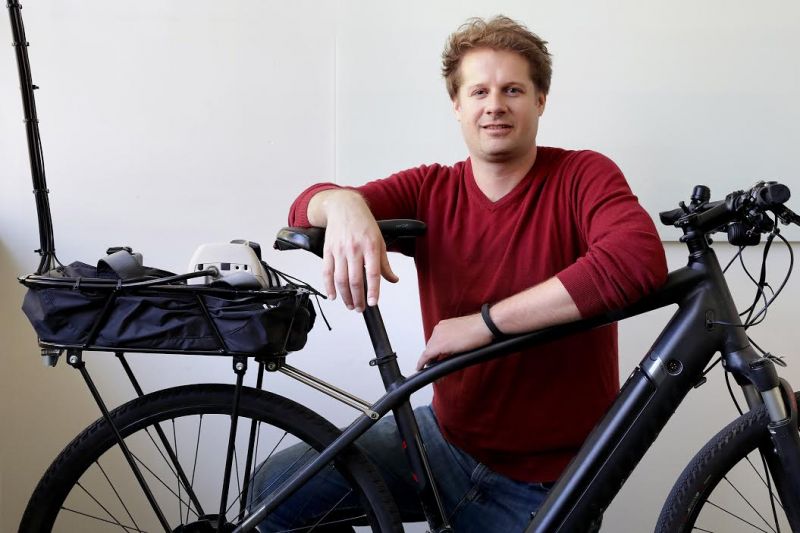Steve Hankey has developed a unique way to track air pollution. However, the experiments of this assistant professor of urban affairs and planning at Virginia Tech do not take place in a lab. They happen in the streets of Blacksburg – on a bicycle.

The bicycle, a Specialized Turbo X, monitors various aspects of air pollution, such as black carbon and particle number concentration.
The idea is to track air pollution hot spots over time, with a long-term goal to be able to know where the heavily polluted areas are in communities.
By biking around town throughout the day, Hankey tracks certain locations and times with the most air pollution.
“The idea is to combine all of this information to look for where you can design healthy neighborhoods that promote physical activity and protect against air pollution exposure,” Hankey said, who along with several undergraduate and graduate students, has finished his research and submitted it for publication.
He hopes to receive funding to expand this research to Washington, D.C., this summer.
Hankey’s bike has an intake that collects air and sends information to a Raspberry Pi unit. This Raspberry Pi unit is a single board computer that is connected to Wifi.
Once information is gathered, the unit sends it to the computer, which records and monitors the data.
“The GPS antenna shows us exactly where those measurements are every second and when they are being taken,” he said.
Hankey started his research as a graduate student at the University of Minnesota, and he has furthered his fieldwork in Blacksburg.
“I have ridden bikes for a long time and really enjoyed it,” Blane Maddox, a 2018 Virginia Tech graduate who worked with Hankey on the air research said. “Then my friend Zach, who was in Hankey’s class, told me about him and the research he was doing, I was interested in participating, so Zach got me in touch. I love riding bikes, so to be able to do that while contributing to a greater purpose was a huge motivator.”
Overall, Hankey has found that the most air pollution is in downtown Blacksburg in the morning. One reason could be because the mixing height of the atmosphere, which is the vertical mixing of air and suspended particles above the ground, is lower in the mornings, and pollution from the cars stays closer to the ground during the commute, he said.
He said he wants to be able to integrate the bike with a phone app that he is developing so people can see and track how they are exposed to pollution over time.
Hankey’s research from previous air monitoring work has appeared in multiple publications, including Environmental Science & Technology, Atmospheric Environment, and Environmental Health Perspectives.
For more about Dr. Hankey’s work visit www.stevenhankey.com/research.html.



